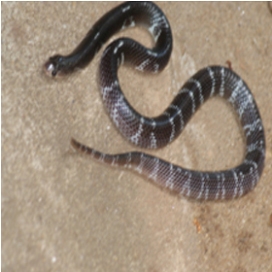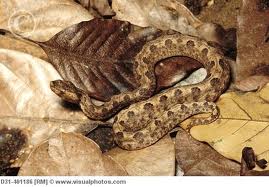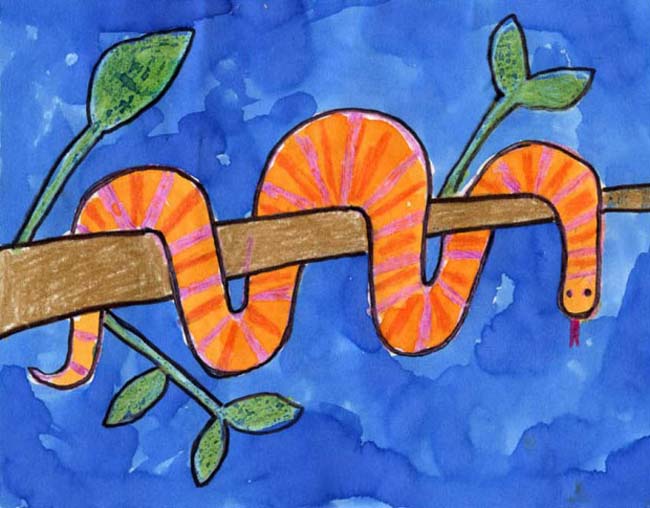Snake bites are a common poisoning instance we can observe. But the solution to this is not to kill those animals at first sight, but to avoid getting bitten by them. The source of food for the snake is the poison it has. It would only bite us if we disturb it or if it feels threatened by us.
Snakes are a commonly disliked animal all over the world. Honestly, even I’m not a big fan of them because they are strangers to me. But I’ve had the opportunity to hold a few innocent harmless fellows of the group and that indeed had me realized the danger they are in. There are 96 snakes in Sri Lanka out of which only 5 are deadly. Others are mildly poisonous or harmless at all.
Understanding this fact and learning to identify which of these animals can be deadly or harmful is important for both yours and their health. Now why do I say so? Firstly, most of the snakes will be saved from unfortunate and tragic deaths when we know they cannot harm us, and because we’ll stay away from the venomous ones by learning about them better.
Secondly, it is really important to identify the species which causes the snake bite because the treatments differ from the animal. In the case of deadly venomous snakes, the antidote to each such snake bite differs. Therefore it is very important if you can identify the snake. Yes it seems like a joke for us, but it is a very serious matter when treating a snake bite. Also, other snake bites should be treated according to the poison level as well.
The 5 deadly snakes are:
1. Spectacled Cobra (Naja naja)

A common culprit of human deaths caused due to snake bites.
Widespread in plains and midhills of Sri Lanka, avoiding montane region.
Identifiable by the “2 eye like marks” on the ventral side and the spectacle mark or the shape of the Sinhala letter “ප” on the dorsal side of the hood.
Its head is distinct from the body. A beautiful snake with scales going from dark brown to white.
Mainly diurnal. However crepuscular and nocturnal activity is also known. This activity prevalent in both day and night maybe the reason for high number of victims due to this animal.
2. Sri Lankan krait (Bungarus ceylonicus)

මුදු කරවලා / දුනු කරවලා
A medium sized terrestrial snake.
Endemic to Sri Lanka. Widespread. A typical subspecies inhabits wet and intermediate zones while another relatively smaller montane subspecies could also be found.
Its head is indistinct. Body is cylindrical. It is black or dark brown and has 20 narrow white bands across the body that disappear completely to the dark body colour as they grow.
Nocturnal. Prefers damp, cool places such as leaf litter, rock crevices, under logs and holes in embankments to hide.
Its main diet is other snakes but also feed on geckos, mice and skinks.
3. Common Krait (Bungarus caeruleus)

තෙල් කරවලා / මග මරුවා
A medium sized snake responsible for many human deaths. Widely distributed in dry zone plains and some parts of intermediate zone.
Its head is indistinct from its neck and the body is cylindrical. The dorsal scales are dark blue-black coloured with the ventral side being pearl white. Juveniles and sub adults have 20 -25 white bands that disappear as they grow.
Nocturnal when foraging. They hide under piles of dry leaves, debris and termite mounds during day. When non aggressive flattens the body and hide its head under while at night they will bite without any provocation.
Diet includes snakes, mice, frogs and lizards, Even cannibalism is recorded among this species.
Its venom is highly toxic and cause respiratory failure.
4. Saw Scaled Viper (Echis carinatus)

වැලි පොළඟා
A relatively small snake mostly accountable for snake bite cases in Sri Lanka’s Northwestern, Northern and Northeastern areas. Also called carpet vipers.
Found in arid coastal regions with low vegetation.
Oval neck is quite distinct from its neck and has a short tail. Its body is usually coiled up in a resting position. Dorsal colouration is yellow – brown. A light grey cross like mark can be seen on its forehead. Ventral side is cream and has dark brown spots. When threatened, they rub their scales, producing a rasping sound.
Feeds on mice, frogs, lizards, centepedes and snakes.
Its venom poisons the blood causing a burning pain followed by numbness and requires immediate medical attention.
5. Russell’s Viper (Daboia russelli russelli)

තිත් පොළඟා / දාර පොළඟා / ගැට පොළඟා
A ground dwelling viper responsible for a large number of deaths.
Widespread in plains and midhills of the country, while commonly found in the dry zone.
It has a large head with very large nostrils, a thin neck and a short tail. A light pink or white “V” shape on its forehead. Ventral side is cream coloured with brown spots. Brown large ovate markings in a row can be seen dorsally along its vertebral region.
Crepuscular, meaning it is active at twilight and moves slowly except when attacking. It has a loud hiss that is possibly followed by strikes with considerable force. Some populations are said to be able to send of their venom to a distance of about a feet.
They feed on small mammals, crabs, frogs, lizards and even birds.
The venom is said to be causing intense burning pain , swelling and discolouration leading to kidney failure and eventually death if untreated.
Others
Hump nosed viper (Hypnale hypnale)

Although not deadly, this snake is an important one to know of.
Commonly found in wet , intermediate zones and some parts of dry zone, this is responsible for the highest number of snakebites in the country.
It is a short, relatively stout pit viper with a distinct head. Its colouration can vary from light brown to blackish brown. A series of triangle marks can be seen at its sides that meet at vertebral region. A dark stripe is present at its cheeks from its eyes to jaws. When threatened it vibrates its tail.
Lives in leaf litter, under low vegetation, hidden under tree trunks and rocks.
Feeds on small vertebrates such as frogs, geckos and rodents.
First Aid in snake bites:
- Immobilize the patient to retard systemic absorption of venom
- Reassure and control early symptoms of poisoning of the patient
- Attend to the site where the bite has happened on skin
- Establish ABC (Airway, Breathing, Circulation) and prevent lowering of oxygen intake
- Take the patient immediately to nearest hospital. All government hospitals have the facilities to treat any snake bite that can occur in Sri Lanka.
- Avoid harmful invasive procedures and treatments such as cutting the site of bite and applying medicine or traditional medicines, nasal insufflation of medicines, application of tourniquet, giving aspirin or alcohol etc
Reference:
Das, I. , De Silva., A. , A photographic guide to snakes and other reptiles of Sri Lanka, 2005
http://www.toxbaselanka.info/snakes.aspx
Image Credits:
http://www.toxbaselanka.info/snakes.aspx
http://4.bp.blogspot.com/-e7zJp7SxVrA/Tgrkmzb8zuI/AAAAAAAAAAM/kuYRupWOQcc/s200/humpx.jpg

